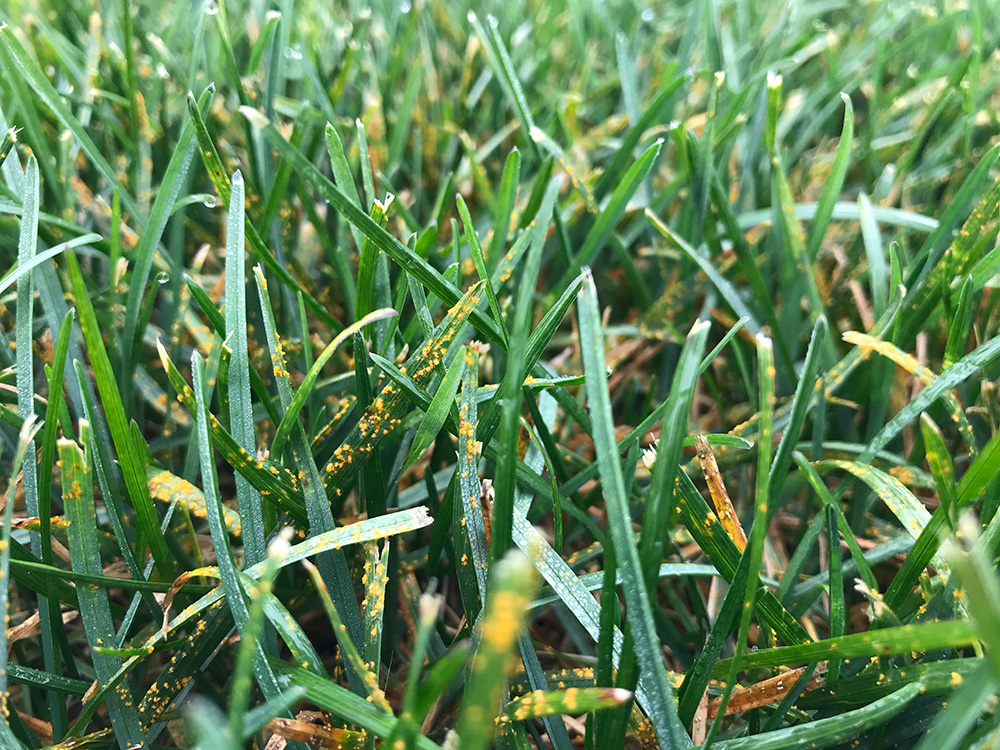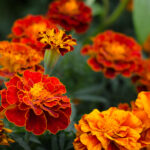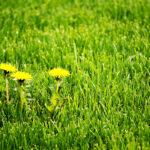
Early symptoms include small, yellow flecks, they expand over time into raised pustules, yellow or orange, that rupture to release spores. Infected plants become yellow. Heavily infected areas become thin and exhibit clouds of orange dust when the foliage is disturbed. The rust pustules on infected leaves turn black during the fall.
Spores produced in the spring, summer and fall are spread by the wind, germinate on the leaves and infect new tissue. Extended periods of wetness will help the spores germinate and the disease will develop quickly. Low light, inadequate fertilization, drought and infrequent mowing encourage rust development.
- Plant varieties that are resistant to rust.
- Raise mowing heights in heavily shaded areas.
- Prune trees and remove unwanted undergrowth to improve air movement and reduce prolonged leaf wetness.
- Water deeply and infrequently to encourage deep rooting and reduce drought stress
- Fungicides may be used


Scott’s MiracleGro Recomends
Scotts® DiseaseEx™ Lawn Fungicide offers a formula to cover a wide range of problem lawn diseases. This new product is fast acting and continues to control lawns diseases for up to 4 weeks.
Photos and content generously provided by The Lawn Institute







